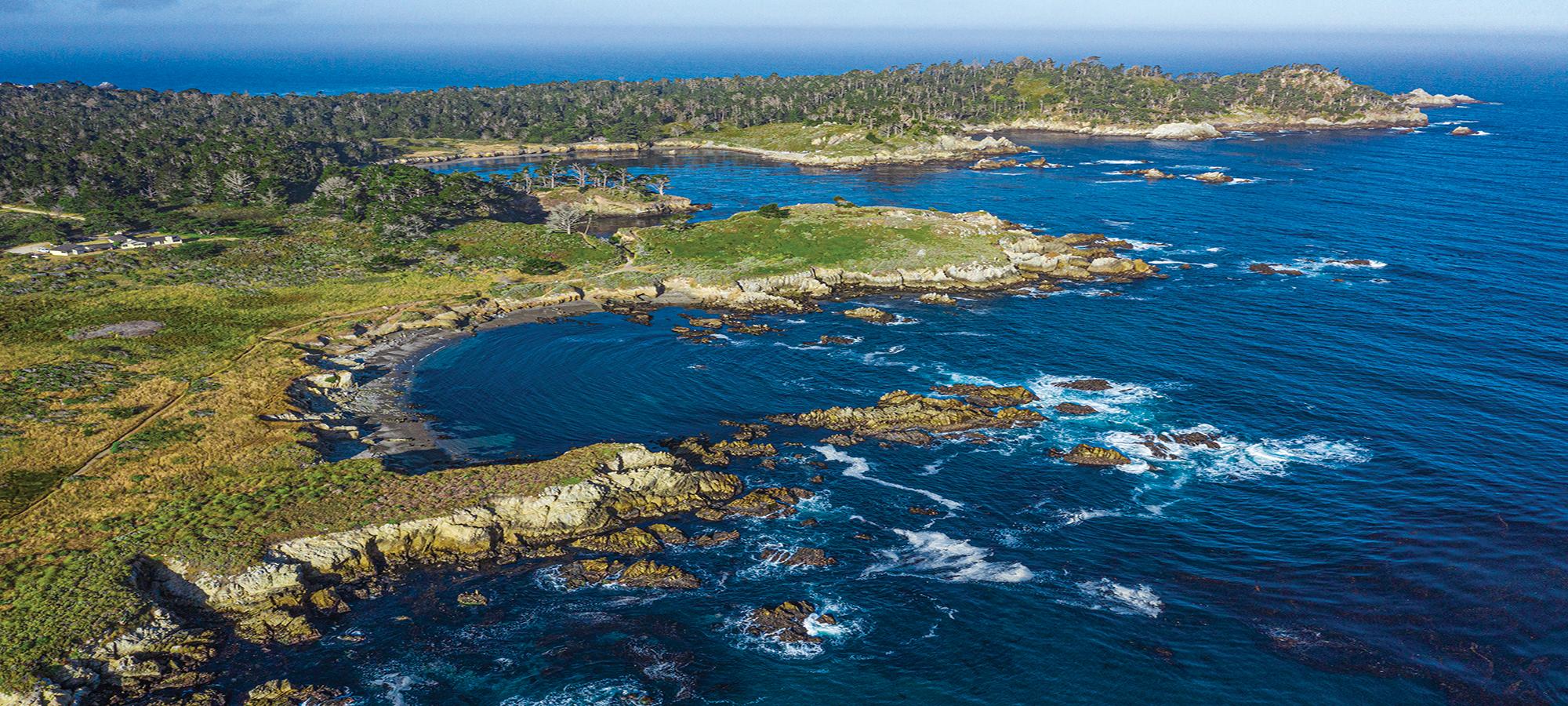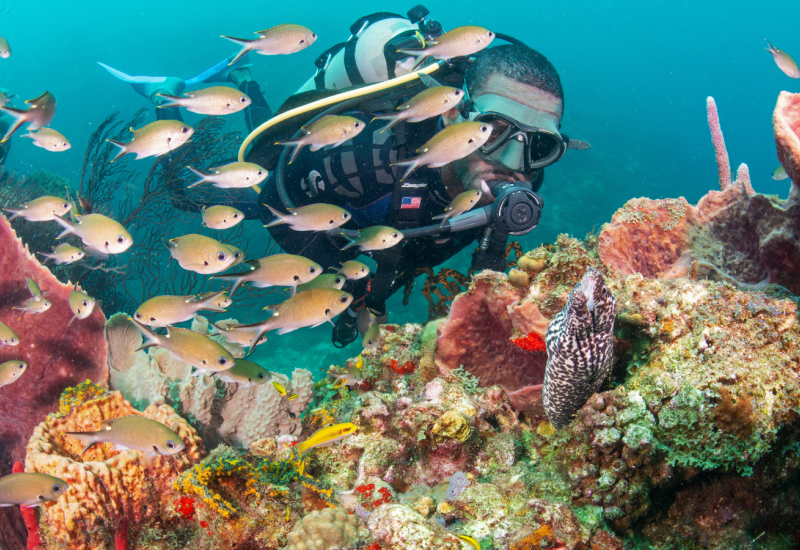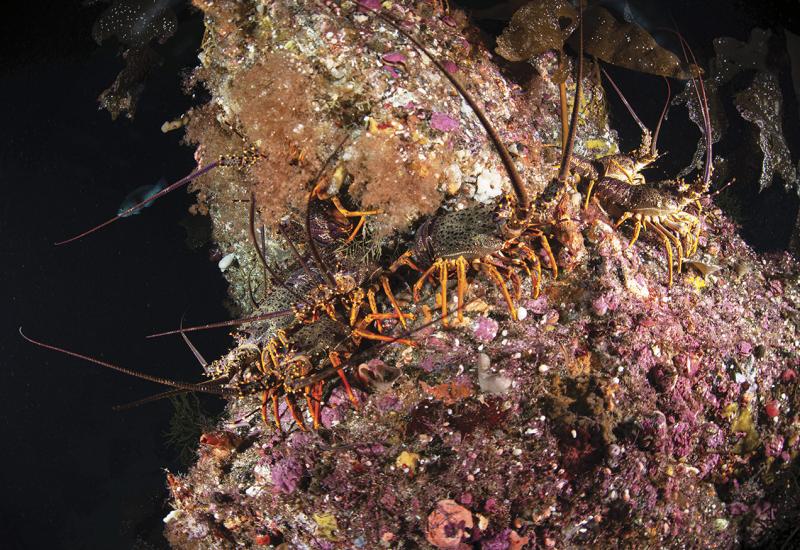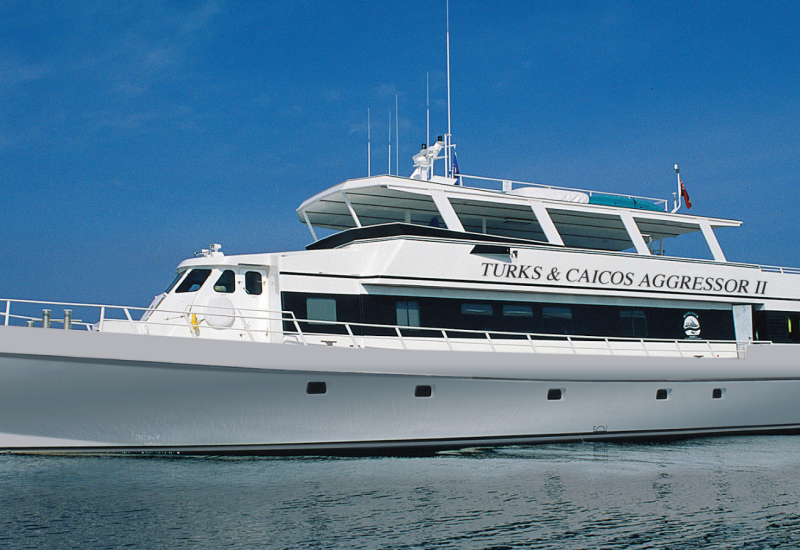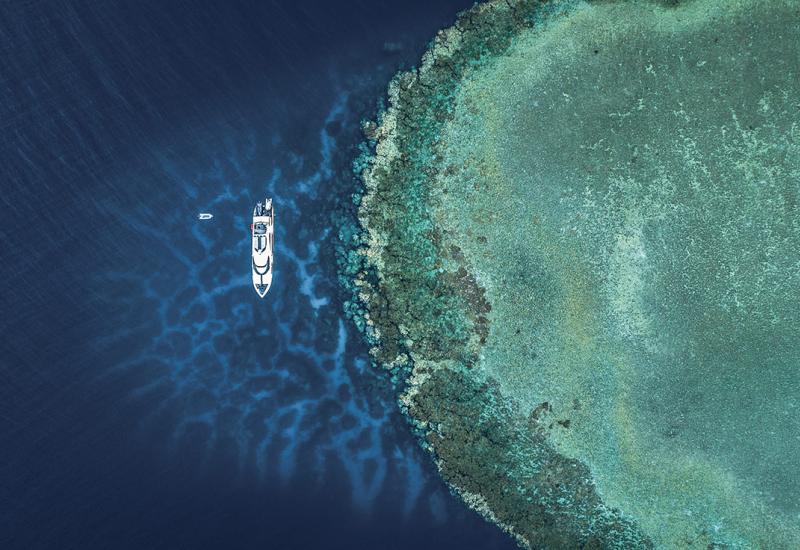The Perfect Central California Dives to End a COVID Dry Spell
Suffering from the longest forced surface interval of my career, courtesy of COVID-19, the only option to reclaim sanity was to submerge close to home. I would drive to my old stomping grounds in California and dive into the past, retracing fin steps in the chilly waters where it all began.
Just as macaroni and cheese is the ultimate comfort food, Monterey’s kelp forests, rocky reefs and dramatic pinnacles have long served as comfort diving in my personal universe. Revisiting fave spots would get me back into the swim of things in no time.
Monterey Bay: Classic, Nostalgic
For the first stop on my comeback tour, I choose the ever-popular Breakwater. The easy shore entry, mellow conditions and shallow profile are the perfect place to flush the cobwebs out of my gills. It also happens to be where I made my very first dive in Monterey, in the 1980s. The cavorting California sea lions and garishly colored nudibranchs I described as “TOTALLY AWESOME!” in my ancient, moldering logbook are still in attendance, joined by camouflaged crustaceans, perch glinting like brass and silver, and a cabezon resembling a brown, bug-eyed Kermit the Frog—best of all is being photobombed by a curious cormorant. And then there’s the smack of sea nettle jellyfish. Dozens of the delicate beauties pulse and spiral about, just beyond the curtain of kelp. Peace and purpose seep into me—how sublime to submerge again, one with the sea, afloat in my happy place. For 75 minutes, the upside-down world above does not exist.
My recovery continues apace at Chase Reef. Located off the end of Coral Street at the western corner of Monterey Bay just inside Point Pinos, Chase is exposed to wind, swell and current. On the right day, however, it’s one of the top sites in the bay.
The 300-yard surface swim from the beach to the kelp bed seems to take longer now than when I was a teenager, but this trip is all about rehab, after all, and the hard work is worth it. A jagged reef rises from the sand at 60 feet, boulders and ledges and sawtooth ridges plastered with sponges, anemones and a blanket of orange colonial tunicates. The rockfish clan is well-represented here; I spy gopher, copper, blue, yellowtail, kelp, black-and-yellow, and vermilion species. I could spend the whole dive photographing the lot, but my destiny becomes clear when a juvenile wolf eel wiggles through the palm kelp to my side, and a merry chase of hide-and-seek ensues.

Brandon ColeStinging Pacific sea nettle jellyfish can grow 15 feet long but are usually smaller.
Remembering an old standby for solid macro imaging when other sites are blown out, I’m keen to revisit Wharf 2 on this expedition, even with calmish seas prevailing. Visibility is rarely good here, but who cares when you are focused on little critters? Just as I recalled, they await in abundance in only 10 to 25 feet of water, living in the junk on the mucky bottom and stuck to—or crawling up and down—the life-encrusted pier pilings. Fringehead blennies peek out of pipes and barnacles. Sculpins scoot over mats of strawberry sea anemones and bryozoans resembling scarlet potato chips. There are octopus and shrimp, bottles and sunglasses. Hermit crabs engage in a tug of war over choice shell homes. Spanish shawl nudibranchs feast on hydroids. This is where I once logged a two-an-a-half-hour dive, in a wetsuit. Ninety minutes in a drysuit is a respectable achievement this time around, but not long enough to do justice to the ubiquitous photo subjects in this sheltered artificial-reef environment.
Carmel Bay: Nirvana in Central California
A short drive to the southern side of the Monterey Peninsula gives divers access to superlative sites in Carmel Bay. Some are rarely explored, deep offshore pinnacles whose GPS coordinates are guarded secrets in the tec-diving community. Other sites are well-known, easy to find and enjoy with or without a boat. Since my diving on this trip is to be entirely human-powered, inspired by legacy adventures when my budget allowed for little more than ramen and air fills, I commit to a handful of shore-access favorites from the early days.
With seaside parking along Highway 1, Monastery Beach is a celebrated dive popular with locals and tourists alike, but never one to be taken lightly. Breaking waves can be downright dangerous when the surf is up, so heed posted signs, talk to experienced locals, and take the plunge elsewhere if conditions aren’t favorable. My first couple of days in the neighborhood are not blessed by the weather gods, so I hunker down and splash inside Monterey Bay instead. The moment the seas calm, I hustle to Carmel and enter the 52-degree water at the far northern tip of Monastery’s crescent-shaped beach.
I’m transfixed by the light underwater, reveling in the majesty of Macrocystis pyrifera, warmed by healing sun rays lancing downward through the amber canopy of the swaying forest of giant kelp. If I were a religious man, this would be my church.
On a second dive, I vow to look down. Anchoring the kelp in this spiritual place, large boulders tumble from 30 feet in the middle of the kelp bed to 100 feet at the northwestern edge, outside the wash rock. (Then the bottom disappears altogether into the abyss of the Carmel Trench.) Fish and invertebrate reef denizens would normally command my attention, but I had gotten a tip from another diver during my quick tank swap, directing me to leave the boulders and swim south onto the sand slope, where piles of white, spindle-shaped egg masses litter the bottom.
Hovering just above are hundreds of opalescent squid. I have lucked upon the annual squid run, when legions of the small cephalopods move up from the depths to aggregate, mate and deposit their eggs to ensure their next generation. Hallelujah, and thanks be to Poseidon.
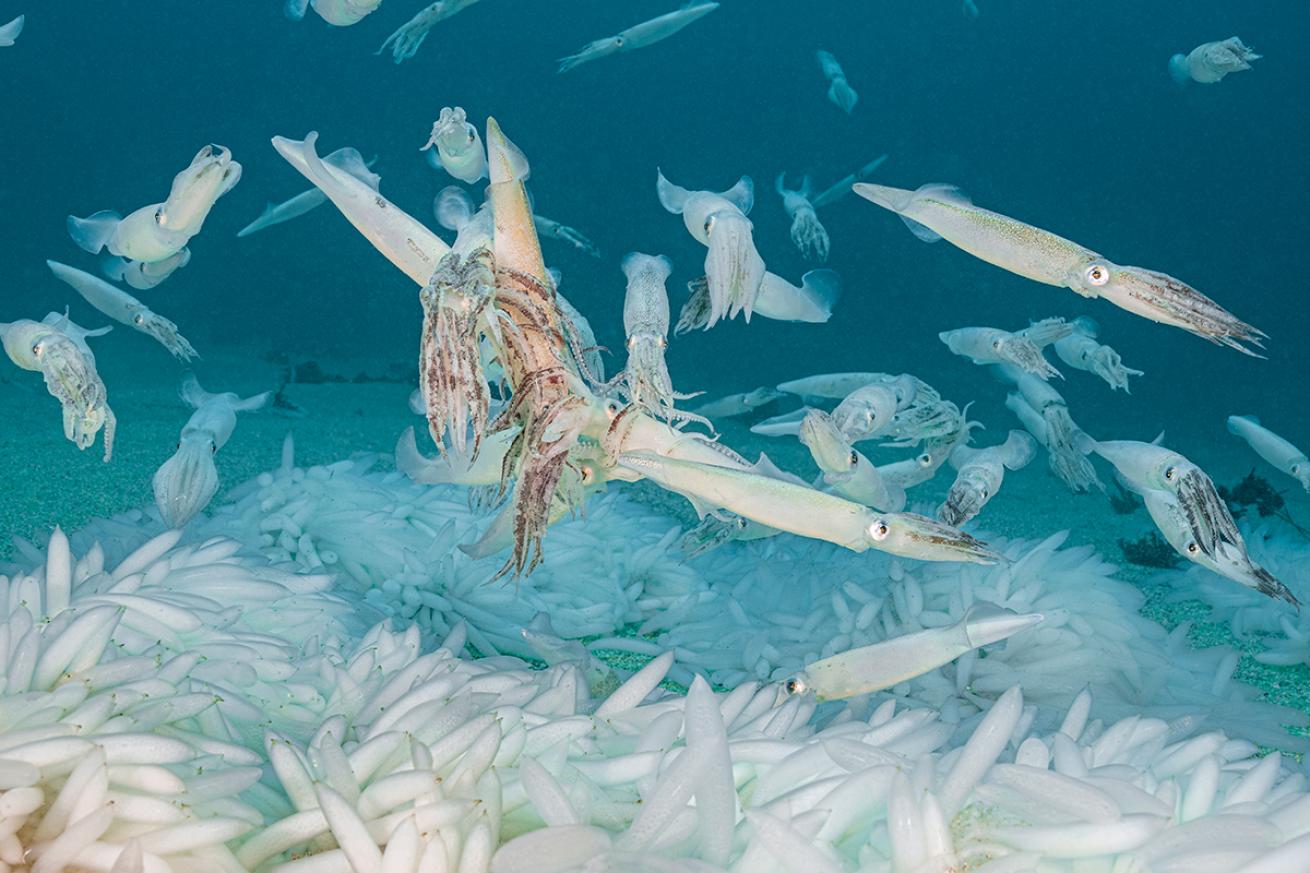
Brandon ColeMultiple male squid grasp a female, competing to mate.
Stewart’s Point, at the northern edge of Carmel River Beach, is always on my hit list for its wealth of marine life and impressive bottom.
Huge triangular granite slabs and peaked rocks forming mini pinnacles 20 to 30 feet high rest underneath and outside a thick forest of bull and giant kelp.
All of the usual suspects can be found here—rockfish and greenlings, sea stars and sea anemones, nudibranchs and their shelled brethren.
Sprigs of hydrocoral—orange and purple, seemingly transplanted from tropical waters—are an added bonus, especially when small fish or purpleringed top snails are perched within. I also cannot resist stalking the heavily armored sheep crabs lumbering about the kelp kingdom.
With a steep beach entry similar to Monastery (but not quite as potentially punishing), a long swim to reach the edge of the kelp bed, and sometimes strong surge from incoming westerly swell, Stewart’s is best tackled by those of intermediate skill level and up.
If push came to shove and I had to pick just one central California site to dive until I breathed my last, it would likely be Point Lobos State Natural Reserve.
Technically, this is a cop-out, since one can reach many different dive sites from the reserve’s boat ramp in Whalers Cove: Bluefish Cove, Middle Reef, Coal Chute Point, Granite Point Wall. But this is my story, and this special place instrumental to my recovery, so I’m standing firm.
Point Lobos is America’s first underwater reserve, designated a safe haven 60 years ago; all manner of marine life—and visiting divers—have greatly benefited from that protection. The park limits the number of divers each day to further reduce human pressure on the ecosystem.
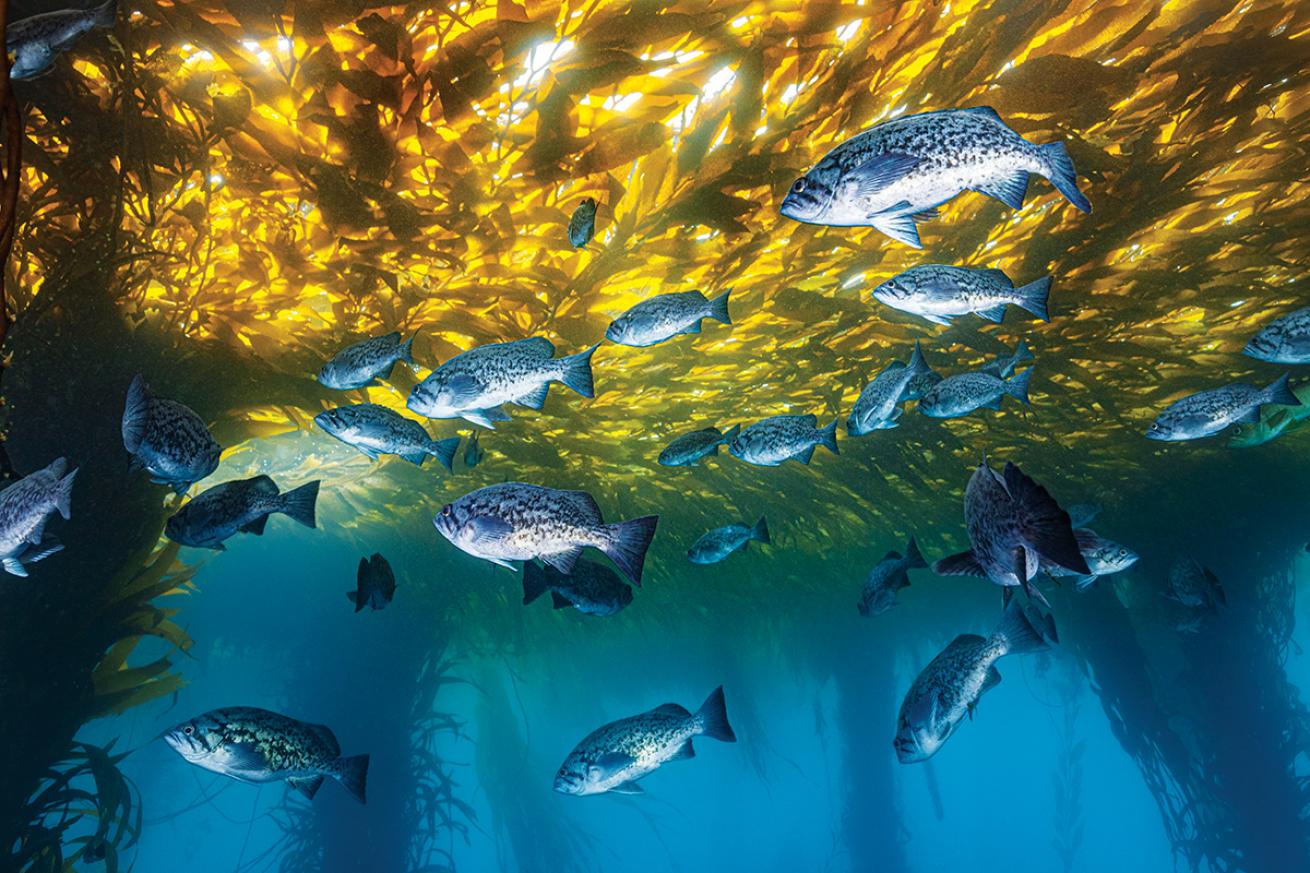
Brandon ColeA school of fish swims through a California kelp reef.
Under a mix of blue sky and fog, I begin the invigorating 30-minute surface swim from Whalers out to Granite Point Wall by slogging through the dense kelp tangle, dragging my beast of a camera. I reminisce about the single-strobe point-and-shoot Nikonos rig I carried here in the film days, streamlined and light as a feather compared to my current boat anchor, a triple-strobe, Kraken-size aluminum housing with 9-inch glass dome. A boat, or a kayak, or dive board, or twin tanks—providing spare air to pass gracefully underneath the kelp canopy—would have made this much easier, but I had promised myself I would not shy from discomfort or calorie burn on this quest for a return to scuba normalcy. After all, exercise has been sanctioned by the CDC as an essential activity to maintain good health in the time of coronavirus.
The pea soup in the shallow bay eventually becomes a greenish shade of blue by the time I reach the drop zone at Granite Point Wall. Using bull kelp as my descent reference, I give myself up to the deep and plummet to 80 feet through a cloud of blue rockfish and into a magnificent scene. A sheer wall forms one side of a canyon, a series of sharp spires the other. Kelp towers above. Breathtaking in 360 degrees.
A stunning vermilion rockfish, wide-eyed and curious, glides over to greet me, then leads me into the maze of monoliths. Rose-spotted anemones decorate one granite face, bright clusters of hydrocorals another. A ling cod, confident in the park’s protection, lounges casually on a pink tapestry of coralline algae offset with jewels of orange cup corals and purple urchins. Crevices are crammed with feather duster worms and spidery-armed brittle stars. More rockfish, an infinite variety of anemones, a constellation of sea stars.
An explosion of life, with me right in the middle. Underwater California is exactly where I needed to be.
Mojo replenished. Mission accomplished. I have regained my stride.

Brandon ColeA seal plays in the Pacific ocean.
Need to Know
When to Go Diving is year-round on the Monterey Peninsula. Winter storms and big swell can put the kibosh on many sites, but there’s almost always a protected place to splash. Weather is quick to change any time of year. September and October are the author’s favorite time for an extended visit to the Monterey area.
Travelers Tips Talk to the locals. Friendly folks at dive shops can help you make the most of current conditions. Some shops offer private guided tours. There’s an active Facebook group. Invest in a good, sturdy pair of dive booties, as you may be clamoring over rocks. Consider making advance reservations at Point Lobos State Natural Reserve (go to parks.ca.gov and enter Point Lobos in search at upper right). When conditions are favorable the park often reaches capacity.
Dive Conditions Sea temperatures fluctuate with the seasons and upwelling events. In general, water is coldest in spring, averaging mid-to high 40s, and warmest in fall, reaching the mid-50s. Thermo-lines are common. Depending on your fortitude, wear a 7 mm wetsuit, semi-dry, or a drysuit. Visibility varies from 5 feet to over 60 depending on location and luck. In general, fall and winter are better than spring and summer. It’s common to have a murkier layer up top and clearer water below. Carmel Bay is usually a bit clearer than Monterey Bay, but also more exposed to prevailing northwest swell and wind. Swell size and direction often dictate where it’s safe (and comfortable) to dive. When conditions cooperate, dozens of sites on the Monterey Peninsula are accessible by shore. Some dives are suitable for beginners, others challenge advanced and even expert divers. Charter boats visit the full gamut of dive sites.
Dive Support Though the author made shore dives for this article, when he boat dives here he chooses Monterey Blue Diving. His preferred shop is Aquarius Dive Shop, a PADI Five Star Instructor Development Center.

